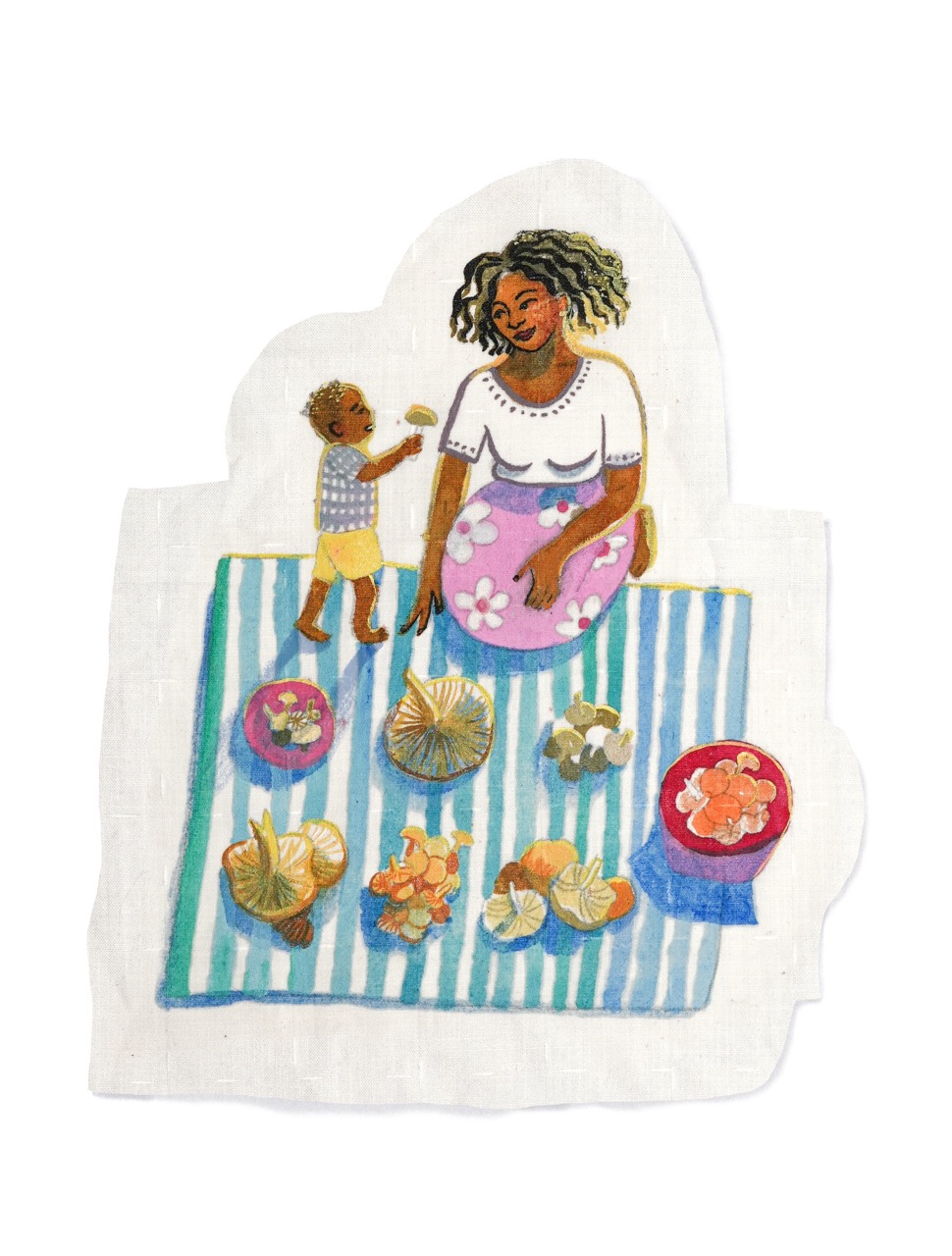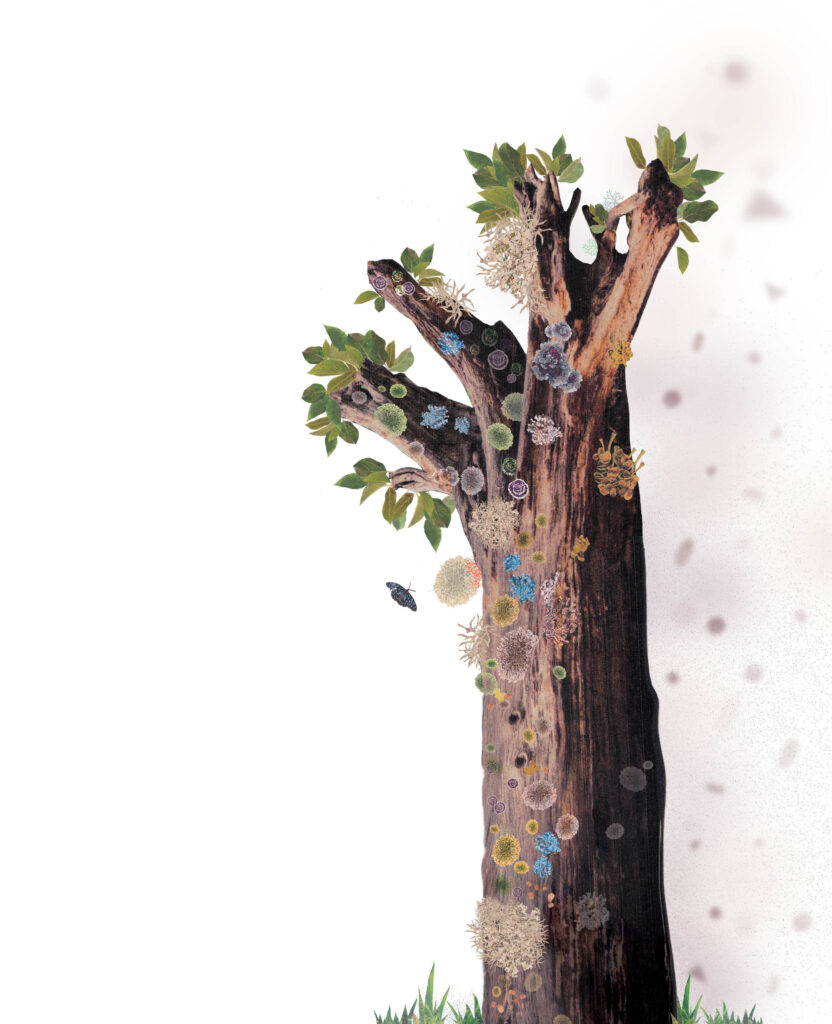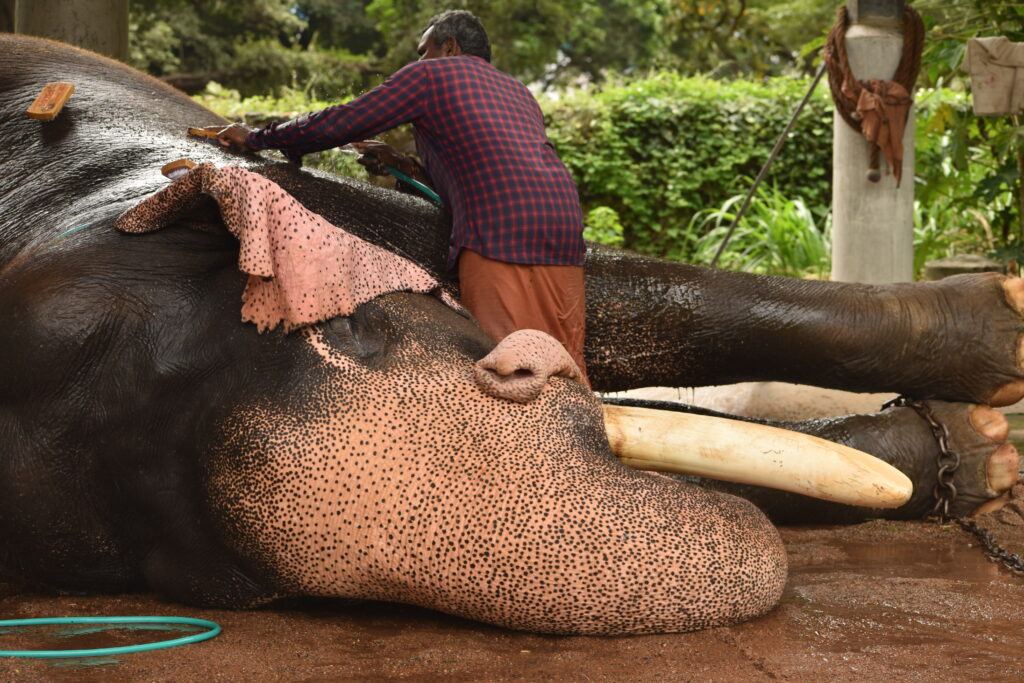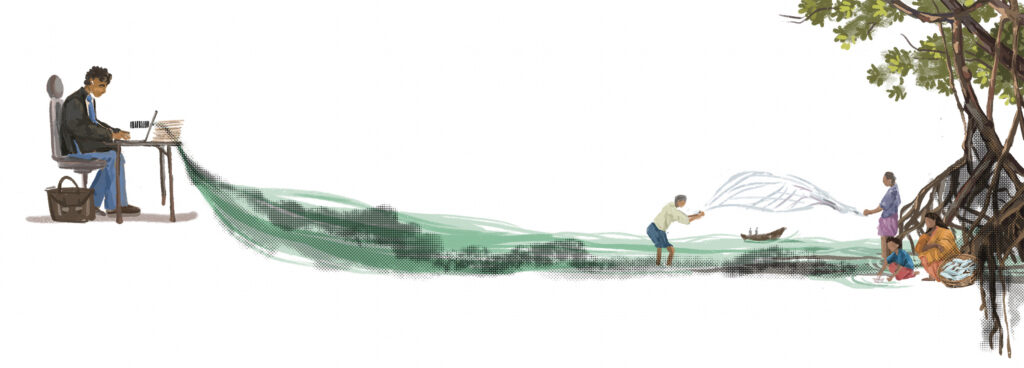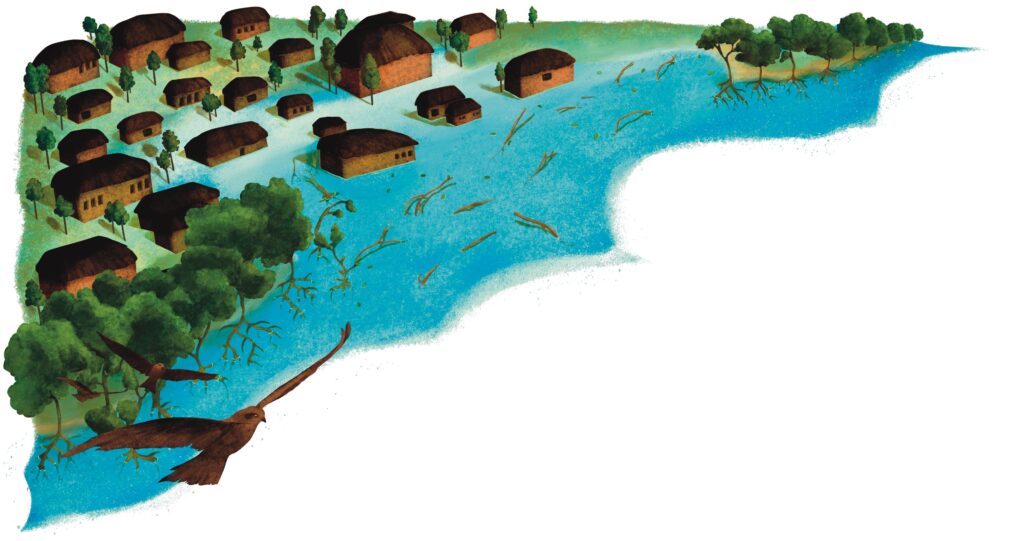I hadn’t been in Zambia long before I discovered that it is a mycophilic society. Getting into taxis in Lusaka, the capital, the drivers would ask me what brought me to the country. And I would respond: “I’m here because of the mushrooms. I’m here to interview the mushroom gatherers for my master’s thesis.” Every one of them would light up and say, “Mushrooms! I love mushrooms!”
Some taxi drivers would tell me that their grandmother, back in the village, used to pick mushrooms. They also explained that during the rainy season mushrooms can be bought in urban markets and purchased along the highways and roads. Indeed, driving up the Copperbelt Highway in Zambia, I would see women and children with bowls full of red chanterelles or suede brown milk caps, holding them up high towards the truck driver window.
During the course of my research, I learned a lot about the popular wild mushrooms in Zambia. Traditionally women have the role of mushroom gatherers and holders of knowledge about fungi and their local surroundings. They celebrate this knowledge as it brings them closer to their environments and their families. During my fieldwork with rural women, they told me they look forward to mushroom season every year. We leave our problems at home, they would say. Or as one woman put it, “If you take your problems with you into the forest, that is when you will meet snakes!”
Women are known to be the custodians of knowledge passed down from their mothers and grandmothers. Their eyes would light up as they recounted how the women in the family took them into the forest and taught them to tell the edible mushrooms apart from the poisonous ones. They shared how they teach their own children about mushroom gathering from an early age. The children love going out to hunt for mushrooms.
The children learn not only about edible and poisonous species, but also gain ecological awareness—which trees host what fungi, which trails are dangerous. They learn about the trees the mushrooms grow under, and about termite mushrooms so large that deer can be found underneath the cap, coiled around the stem. They learn to be aware of snakes so big the tall grass parts in their approach, and about the dangers of crossing the river due to crocodiles. They hear the stories grandmothers tell, the fairytales about mushrooms, and they come along as the women sing songs about them. These songs, fairytales, and foraging rituals weave cultural memory. They are oral libraries of ecological knowledge.
Food and medicine
Provisioning is another important role women maintain in rural Zambia, and one in which mushrooms play an important role. At the beginning of the rainy season that extends from November to April, food can be scarce. Being able to gather mushrooms at this time of year is important for food security in many African countries, as highlighted by the World Health Organisation (WHO) and the Food and Agriculture Organisation of the United Nations.
As people plant seeds for crops of cassava, potatoes, maize, and legumes, mushrooms are often the main subsistence food that helps them get by until the crops start to yield. Many long for all the varieties of flavour the different species have and the different preparations. Mushrooms are most often boiled with onions and tomatoes and eaten with nshima, a maize porridge. In rural villages they provide an important substitute for meat, which can be quite expensive. I was told that some mushrooms taste like fish, and some taste like meat. Women fondly talked about cooking Tente mushrooms with onions and tomatoes, the sweet smell wafting through the air in the village.
Young women growing up in rural Zambia also learn about mushrooms as part of the home medicine cabinet. Women spoke about three species they gather for healthcare purposes. The mushrooms are woody and dry already when picked and are soaked or burned to ash before they are ingested or applied topically and they are used for treating a variety of ailments, from earache and diarrhoea in children, to wounds, skin issues, anxiety, and women’s health issues.
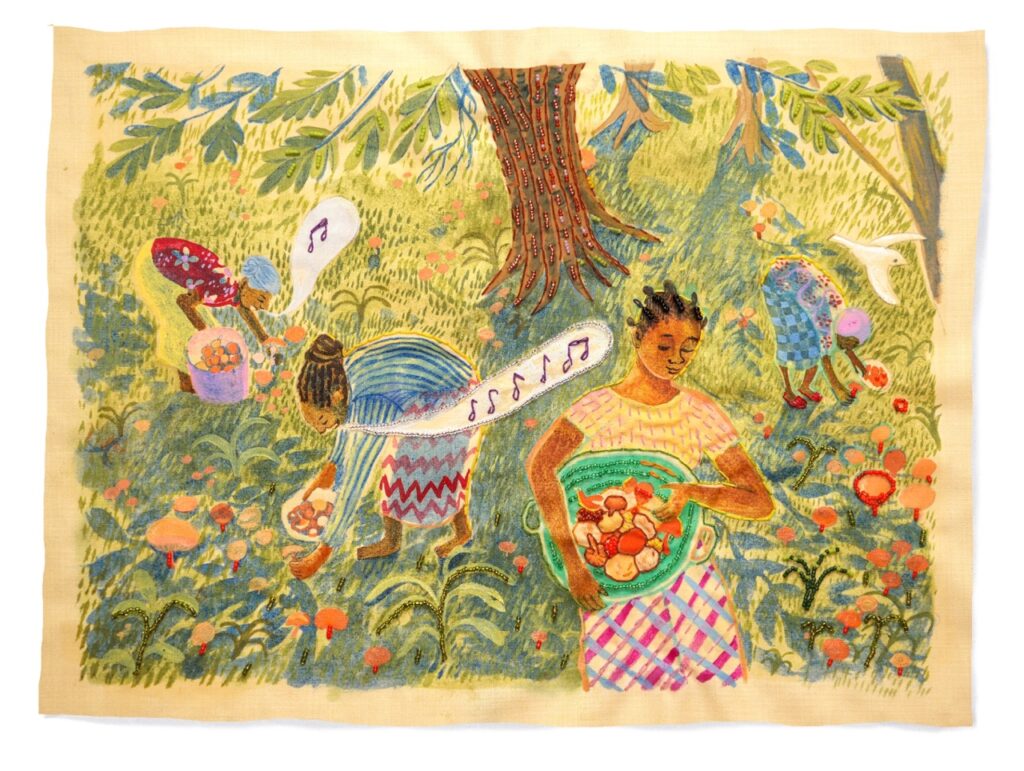
During my fieldwork I did not ask whether women used these mushrooms for health issues because they didn’t have access to health services, or whether they used them in addition to the health services they could access at the rural health posts.
A Kaonde woman in the North-Western Province explained that some years ago during a stressful period of many problems with her family, she suffered from terrible anxiety. She would crush Kyowankunku mushroom, roll it into a cigar and smoke it, which she said really helped with her anxiety during that difficult time.
The WHO suggests that up to 80 percent of people in Africa rely on traditional medicine for their primary healthcare needs. Being able to gather and use traditional medicine contributes to the resilience of people who directly depend on the forest in many parts of the world. What is gathered in the forest is often the most available, accessible, affordable, and culturally acceptable form of healthcare.
Fragile economies
Miombo forests represent a vast ecoregion of tropical grasslands, savannas and shrublands covering much of central and southern Africa. These semi-deciduous forests are dominated by trees in the legume family from the genera Brachystegia, Julbernardia, and Isoberlinia.
In the miombo forests of Zambia, mushrooms are more than food—they are memory, medicine, and music. Women pass down fungal knowledge through song, storytelling, and daily survival. Yet with urbanisation and extractive industries such as mining and charcoal production, many forests are being bulldozed or burned. In many areas where women used to go, the forest is gone, and with it, the mushrooms.
Miombo forest trees are mainly chopped for fuel. Women in rural areas referred to the men who cut these trees as ‘charcoal burners’: they stack the trees in a pile and cover them with dirt before setting them on fire and letting them slowly smoke until the wood turns into bits of charcoal. When the charcoal has cooled, it is bundled up, transported to the highway and sold.
The goods of the forest present a gendered tension: charcoal production is often done by men, mushroom gathering by women. On my drive along dirt roads into villages to interview mushroom gatherers, I would see men riding their bicycles or mopeds in the opposite direction, with large charcoal bundles strapped to the back. Back on the highway, I would see women sitting side by side with the charcoal burners selling their product.
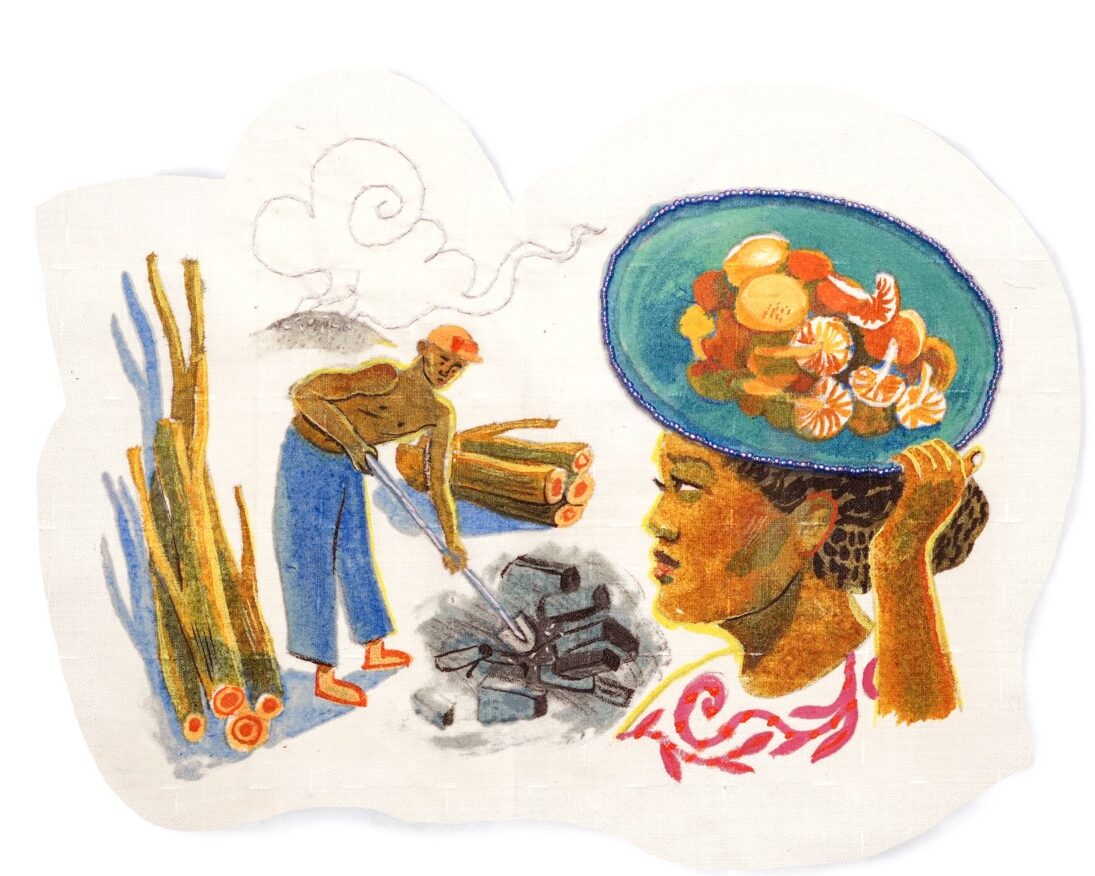
I would ask the women, what can be done about this? What can be done about the men cutting the trees for charcoal, the very trees that provide mushrooms you pick to eat, to sell? A sad sentiment would hang over the group, sighs and mostly silence, lowered voices. “We can’t do anything. We beg them not to cut the trees. Sometimes we shout at them. Some of them are our husbands. There is nothing we can do. They need to make money too.”
Mushrooms were always food and medicine in Zambia, but these days they also present an important source of income for the women who gather mushrooms during the Emerald Season—as the rainy season is called, characterised by lush green vegetation and high water levels in rivers—and sell them along the highways. With the ever expanding mining industry in Zambia, massive highways run through the country with trucks that carry heavy loads of copper, the country’s main export.
The irony is that as much as the copper transport truck drivers from the mining companies love to buy mushrooms on their drive up the Copperbelt Highway, they are also part of the problem. International companies own the mining operations and are constantly expanding into forested areas. In the wake of mining sludge, runoff, and deposits the size of mountains, the trees of the miombo forest are bulldozed, and the mushrooms with them.
Beyond biodiversity
For some, mushroom gathering has become nothing but a distant memory. As forests and lands disappear, people move to cities.
The women I talked to in the city only have faint recollections of mushroom gathering, and they are no longer able to pass on the knowledge between generations. Current fungal conservation logic centers on rare species lists and habitat maps. But this misses the human connection—the songs, stories, livelihoods that disappear silently. The food and medicine that vanish. Preservation must include cultural conservation, especially gendered and Indigenous practices.
What if fungal conservation was not just about rare species, but also about preserving this vital thread in the tapestry of human resilience? Fungal conservation is unlike animal and plant conservation—you cannot count mushrooms like you can count elephants, and fungi were, in fact, only understood to not be plants as recently as the late 1960s. Ectomycorrhizal mushrooms, the aboveground mushrooms we can see, often appear fleetingly, unpredictably, and depend on intact forest ecosystems. Yet they shape livelihoods, culture, and health in deeply rooted, though less visible, ways.
What if we preserved forests not only for the fungi themselves, but for the women who sing to them? In a world of measurable data, the value of mushrooms may be hard to quantify, but in the miombo, their worth is sung, tasted, and remembered. Fungal conservation is not just environmental. It is cultural continuity, economic survival, and medicinal resilience—and the women of the forest are its frontline stewards.
